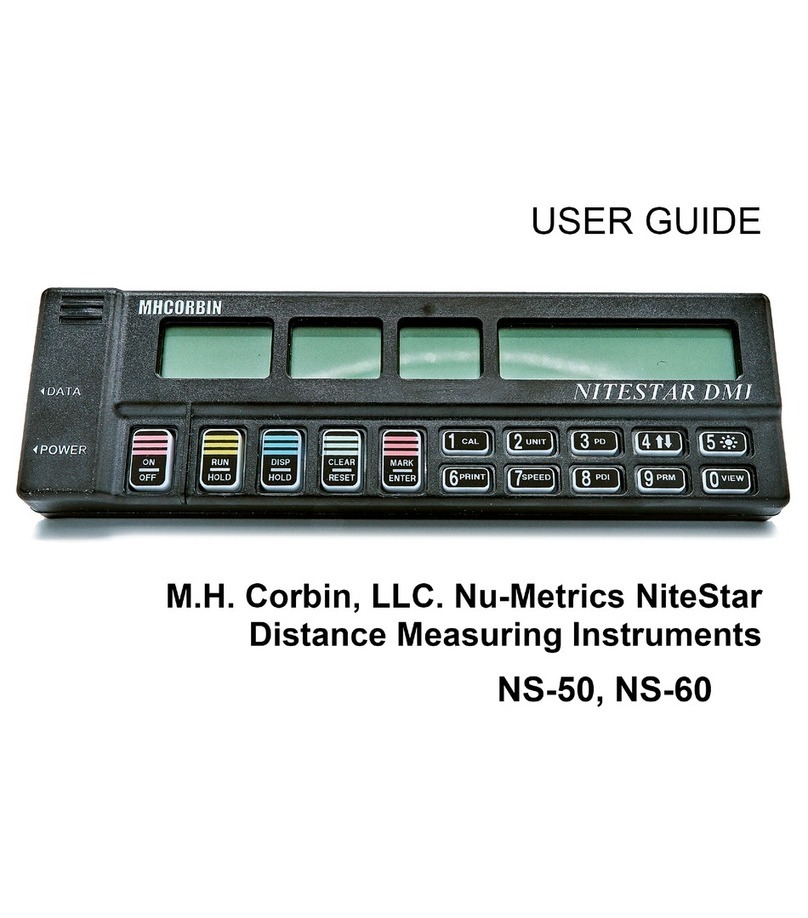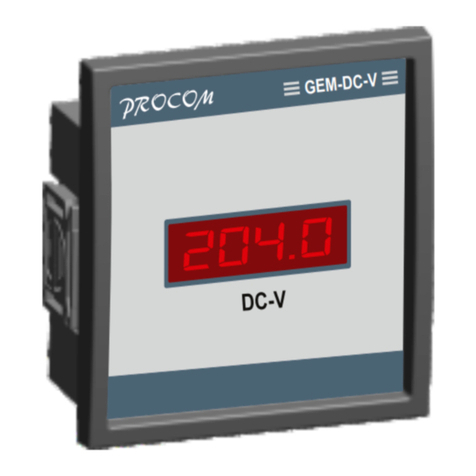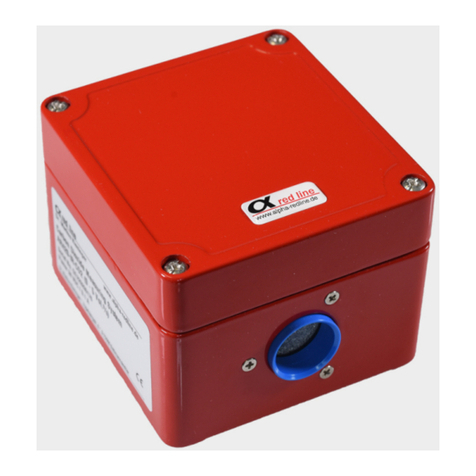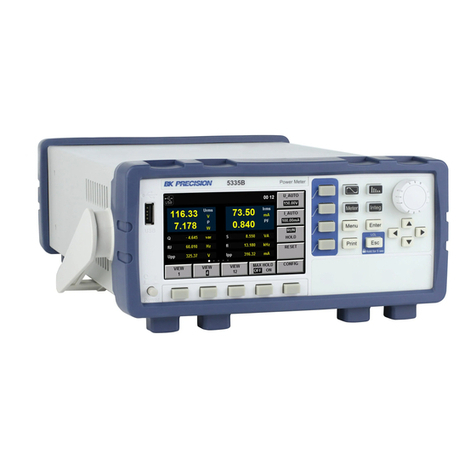GLI P63 Instruction Manual

-~
ARTISAN
®
~I
TECHNOLOGY
GROUP
Your definitive source
for
quality
pre-owned
equipment.
Artisan Technology
Group
Full-service,
independent
repair
center
with
experienced
engineers
and
technicians
on staff.
We
buy
your
excess,
underutilized,
and
idle
equipment
along
with
credit
for
buybacks
and
trade-ins
.
Custom
engineering
so
your
equipment
works
exactly as
you
specify.
•
Critical
and
expedited
services
•
Leasing
/
Rentals/
Demos
• In
stock/
Ready-to-ship
•
!TAR-certified
secure
asset
solutions
Expert
team
ITrust
guarantee
I
100%
satisfaction
All
tr
ademarks,
br
a
nd
names, a
nd
br
a
nd
s a
pp
earing here
in
are
th
e property of
th
e
ir
r
es
pecti
ve
ow
ner
s.
Find the Hach / GLI P63A1N1A1B1N at our website: Click HERE

Rev. 7-1201 Model P63 pH Analyzer
1
OPERATING INSTRUCTION MANUAL
Model P63
pH Analyzer
Worldwide Headquarters and Sales:
GLI International, Inc.
9020 West Dean Road
Milwaukee, Wisconsin 53224
U.S.A.
Represented By:
In the interest of improving and updating its equipment, GLI reserves the right to alter specifications to equipment at any time.
Phone:
Fax:
E-mail:
Web:
[414] 355-3601
[414] 355-8346
info@gliint.com
www.gliint.com
Artisan Technology Group - Quality Instrumentation ... Guaranteed | (888) 88-SOURCE | www.artisantg.com

Model P63 pH Analyzer Rev. 7-1201
2
This operating manual and other GLI operating manuals
are available on GLI’s web site at gliint.com when viewed
using Adobe’s free Acrobat reader. To get this reader, link
to Adobe through GLI’s web site or visit Adobe’s web site
at adobe.com.
WARRANTY
GLI International, Inc. warrants the Model P63 to be free from defects in material
or workmanship for a period of 2 years (24 months) from the date of shipment of
this product from our facility. A warranty claim will not be honored if defects are
not reported within the warranty period, or if GLI International determines that
defects or damages are due to normal wear, misapplication, lack of mainte-
nance, abuse, improper installation, alteration, or abnormal conditions. GLI
International’s obligation under this warranty shall be limited to, at its option, re-
placement or repair of this product. The product must be returned to GLI
International, freight prepaid, for examination. The product must be thoroughly
cleaned and any process chemicals removed before it will be accepted for re-
placement or repair. GLI International’s liability shall not exceed the cost of the
product. Under no circumstances will GLI International be liable for any inciden-
tal or consequential damages, whether to person or property. GLI International
will not be liable for any other loss, damage or expense of any kind, including
loss of profits, resulting from the installation, use, or inability to use this product.
Artisan Technology Group - Quality Instrumentation ... Guaranteed | (888) 88-SOURCE | www.artisantg.com

Rev. 7-1201 Model P63 pH Analyzer
3
IMPORTANT SAFETY INFORMATION
This analyzer is compliant with safety standards as outlined in:
European Community low voltage directive (EN 61010-1)
Please read and observe the following:
•Opening the analyzer door exposes you to line power voltage, if present, at terminals TB5 and TB6 in
the base of the enclosure. This may be hazardous. Always remove line power before entering this area
in the analyzer. However, the analyzer door assembly contains only low voltage and is completely safe
to handle.
•Install this analyzer in accordance with relevant local codes and instructions contained in this operating
manual. Also, note and comply with the analyzer’s technical specifications and input ratings. If one line
of the line power mains is not neutral, use a double-pole mains switch to disconnect the analyzer.
•Whenever it appears that analyzer safety is questionable, disconnect line power from the analyzer to
ensure against any unintended operation. For example, an unsafe condition is likely when:
1) The analyzer appears visibly damaged.
2) The analyzer fails to operate properly or provide the intended measurements.
3) The analyzer has been stored for long periods at temperatures above 140°F (60°C).
•Only qualified personnel should perform wiring or repairs, and only when the analyzer is not powered.
HELPFUL IDENTIFIERS
In addition to information on installation and operation, this instruction manual may contain
WARNINGS pertaining to user safety, CAUTIONS regarding possible instrument malfunction,
and NOTES on important, useful operating guidelines.
WARNING:
A WARNING LOOKS LIKE THIS. IT WARNS YOU OF THE
POTENTIAL FOR PERSONAL INJURY.
CAUTION:
A CAUTION LOOKS LIKE THIS. IT ALERTS YOU TO POSSIBLE
INSTRUMENT MALFUNCTION OR DAMAGE.
☞
NOTE: A note looks like this. It alerts you to important, useful
operating information.
Artisan Technology Group - Quality Instrumentation ... Guaranteed | (888) 88-SOURCE | www.artisantg.com

Model P63 pH Analyzer Rev. 7-1201
4
Definition of Equipment Symbols
This symbol means CAUTION and alerts you to possible danger or
instrument malfunction. Refer to this manual before proceeding.
This symbol, which appears on the analyzer enclosure at the green
ground screw (shown in Figure 2-3), means that this is a protective
ground terminal and alerts you to connect an earth ground to it.
This symbol on the equipment means that there is alternating cur-
rent present and alerts the user to be careful.
Artisan Technology Group - Quality Instrumentation ... Guaranteed | (888) 88-SOURCE | www.artisantg.com

Rev. 7-1201 Model P63 pH Analyzer
5
CONDENSED OPERATING INSTRUCTIONS
This manual contains details for all operating aspects of the instrument. The follow-
ing condensed instructions are provided to assist you in getting the instrument
started up and operating as quickly as possible. These condensed instructions
are only for basic operation. To use specific features of the instrument, refer to
the appropriate sections in this manual for instructions.
A. CONNECTING SENSOR
1. After properly mounting the analyzer (PART TWO, Section 2), connect the
GLI Differential Technique pH sensor to “SENSOR”terminals on TB1 (Fig-
ure 2-3), matching colors as indicated.
When using a conventional
combination pH electrode, follow the instructions in PART TWO, Section
3.2 to connect it.
NOTE: For GLI Differential sensors that have two shield wires, always
connect its outer shield to the green ground screw (earth ground)
and its inner shield to “SHLD”Terminal 6.
2. Configure the analyzer for the type of sensor being used:
A. Press the CONFIG key to display the “CONFIGURE”menu screen.
B. Use the
Ø
Ø
key to select the “Main Parameter”line, and press ENTER
key to display the “MAIN PARAMETER”submenu screen.
C. With the “Sensor Type”line selected, press ENTER key to display the
“SENSOR TYPE”submenu screen.
D. Use
Õ
Õ
or
Ö
Ö
key to choose the appropriate selection:
•DIFF for GLI Differential Technique Sensor
•COMB for conventional combination pH electrode
With the selection highlighted, press ENTER key to enter it.
B. ADJUSTING DISPLAY CONTRAST
Ambient lighting conditions may make it necessary to adjust display contrast to
improve visibility. With the MEASURE screen displayed, press and hold the
ENTER key and simultaneously press the
×
×
or
Ø
Ø
key until attaining the desired
contrast.
(continued on next page)
Artisan Technology Group - Quality Instrumentation ... Guaranteed | (888) 88-SOURCE | www.artisantg.com

Model P63 pH Analyzer Rev. 7-1201
6
CONDENSED OPERATING INSTRUCTIONS
C. CALIBRATING THE ANALYZER
The analyzer must be calibrated so that measured values will correspond to
actual process values. The analyzer provides different methods for calibration.
For the first-time calibration, however, it is highly recommended to use the
two-point arbitrary buffer method described below:
1. Press the CAL key to display the “CALIBRATION”menu.
2. With the “pH”line selected, press ENTER key to display the “pH
CALIBRATION”submenu screen.
3. With the “Arbitrary Buffer”line selected, press ENTER key to start calibra-
tion using this method (analog output state selection screen appears).
4. With analog output selection screen displayed:
A. Use
Õ
Õ
and
Ö
Ö
keys to select “HOLD”to hold the analog outputs at their
present values during calibration. Outputs can also be transferred
(XFER) to user-preset values or allowed to remain ACTIVE.
B. Use
Ø
Ø
key to select “CONTINUE,”and press ENTER key to continue.
5. On subsequently appearing screens, follow the easy instructions and make
the appropriate selections to complete the calibration.
D. COMPLETING ANALYZER CONFIGURATION
The analyzer provides many useful features including analog and TTL outputs,
relays, optional PID controller, and software alarms. To configure these ana-
lyzer features to your application requirements, use appropriate CONFIGURE
submenus to make selections and “key in”values. Refer to PART THREE, Sec-
tion 5 for complete configuration details.
Artisan Technology Group - Quality Instrumentation ... Guaranteed | (888) 88-SOURCE | www.artisantg.com

Rev. 7-1201 Model P63 pH Analyzer
7
TABLE OF CONTENTS
PART ONE - INTRODUCTION
SECTION 1 GENERAL INFORMATION
1.1 Capability Highlights ........................................................................13-14
1.2 Modular Construction ............................................................................14
1.3 Retained Configuration Values .............................................................15
1.4 Analyzer Serial Number ........................................................................15
1.5 EMI/RFI Immunity..................................................................................15
SECTION 2 SPECIFICATIONS....................................................................................16-18
PART TWO - INSTALLATION
SECTION 1 UNPACKING.................................................................................................19
SECTION 2 MECHANICAL REQUIREMENTS
2.1 Location.................................................................................................19
2.2 Mounting...........................................................................................20-21
2.3 Conduit Hole Requirements ..................................................................21
SECTION 3 ELECTRICAL CONNECTIONS
3.1 GLI Differential Technique Sensor...................................................22-23
Hookup Using Built-in Temperature Element...................................24
Hookup Using External Pt 1000 ohm RTD..................................24-25
3.2 Conventional Combination pH Electrode .........................................25-26
3.3 Other Electrodes ...................................................................................26
3.4 TTL Inputs .............................................................................................26
3.5 Analog Outputs:
Isolated 0-5 VDC/0-1 mA .................................................................27
Isolated 4-20 mA..............................................................................27
3.6 Relay Outputs:
Electromechanical Relays (standard) ..............................................28
Solid State AC Relays (optional) .....................................................29
Solid State DC Relays (optional) .....................................................30
3.7 TTL Outputs:
Internal-supply Logic Operation.......................................................31
External-supply Logic Operation......................................................32
DC Relay Coil Driver Operation.......................................................33
3.8 Line Power ............................................................................................34
Artisan Technology Group - Quality Instrumentation ... Guaranteed | (888) 88-SOURCE | www.artisantg.com

Model P63 pH Analyzer Rev. 7-1201
8
TABLE OF CONTENTS (continued)
PART THREE - OPERATION
SECTION 1 USER INTERFACE
1.1 LCD Display ..........................................................................................35
1.2 Keypad Keys:
Displaying MEASURE Screen (normal display mode).....................35
Displaying Main Menu Screens ..................................................36-37
Moving Within a Screen...................................................................37
1.3 Entering Values:
Viewing Selected Items....................................................................37
Confirming Entries ...........................................................................38
Storing Configuration Data ..............................................................38
SECTION 2 MENU STRUCTURE.....................................................................................39
SECTION 3 INSTRUMENT STARTUP
3.1 Adjusting Display Contrast ....................................................................39
3.2 Initial Calibration ...................................................................................39
3.3 Initial Configuration ...............................................................................39
SECTION 4 CALIBRATE MENU
4.1 CALIBRATE Menu Structure .................................................................40
4.2 Things to Know About pH Calibration:
Calibrate at Regular Intervals ..........................................................41
Temperature-corrected pH Measurement........................................41
Should You Temperature Calibrate? ...............................................41
4.3 Sensor’s First pH Calibration ...........................................................41-42
4.4 pH Calibration Methods.........................................................................42
Arbitrary Buffer Method...............................................................43-44
Pre-Defined Buffer Method .........................................................44-46
Sample Method ...........................................................................47-48
Wash/Cal Method (only for use with GLI Cal-Clean™system) ......49-50
4.5 Temperature Calibration .......................................................................50
SECTION 5 CONFIGURE MENU
5.1 CONFIGURE Menu Structure ...............................................................51
5.2 Operating PID Controller (optional feature):
PID TUNING ....................................................................................52
PID MODE ..................................................................................52-53
PID TIMER .......................................................................................53
5.3 Setting Relays/TTL (NAMUR) Outputs.............................................54-56
5.4 Establishing Wash/Cal System Operation:
For GLI Cal-Clean™System:
Dedicated System Outputs and Required Inputs...................57-59
DEFINE WASH CYCLE Steps...............................................59-61
Artisan Technology Group - Quality Instrumentation ... Guaranteed | (888) 88-SOURCE | www.artisantg.com

Rev. 7-1201 Model P63 pH Analyzer
9
TABLE OF CONTENTS (continued)
DEFINE CAL CYCLE Steps...................................................61-63
SCHEDULE WASH/CAL Events............................................63-64
REMOTE SYSTEM CONTROL ..................................................65
GLI Cal-Clean™Wash/Cal System Safeguards ...................65-66
For GLI Air/Water Blast Cleaning System:
DEFINE WASH CYCLE.........................................................66-67
SCHEDULE WASH Events. ..................................................67-68
5.5 Selecting TEMP COMP METHOD....................................................69-70
5.6 Setting ANALOG OUTPUT 1............................................................70-71
5.7 Setting ANALOG OUTPUT 2.................................................................71
5.8 Setting MAIN PARAMETER Functions:
SENSOR TYPE................................................................................72
PULSE SUPPRESSION..............................................................72-73
CAL BUFFER VALUES....................................................................73
pH STABILITY MODE.................................................................73-74
5.9 Setting TRANSFER CONDITION:
RELAYS (A, B, and C) ................................................................74-75
TTL OUTPUTS (A, B, and C)...........................................................75
ANALOG OUTPUTS (1 and 2).........................................................75
5.10 Setting SOFTWARE ALARMS .........................................................76-77
5.11 Setting MEASURE SCREEN Resolution...............................................77
5.12 Setting Analyzer Clock (SET TIME/DATE)............................................77
5.13 SET PASSCODE...................................................................................78
SECTION 6 MAINTENANCE MENU
6.1 MAINTENANCE Menu Structure ........................................................... 79
6.2 HOLD/XFER OUTPUTS........................................................................80
6.3 MANUAL PID (manually operate PID controller)...................................80
6.4 SENSOR MAINTENANCE (manually operate wash system):
For GLI Cal-Clean™System
(MANUAL WASH/RETRACT/INSERT sensor)......................81-82
For GLI Air/Water Blast Cleaning System
(MANUAL WASH).......................................................................82
6.5 MANUAL ANALOG OUT (set/jog analog output mA values).................83
6.6 MANUAL RELAY/TTL (manually activate relay/TTL outputs) ..........83-84
6.7 RESET OVERFD TIMER (reset relay overfeed timers).........................84
6.8 SIMULATE pH/TEMP Values ................................................................85
SECTION 7 DIAGNOSTICS MENU
7.1 Predictive pH Sensor Diagnostics:
End-of-Sensor Life ...........................................................................86
Electrode Impedance Readings.......................................................87
7.2 DIAGNOSTICS Menu Structure ............................................................88
Artisan Technology Group - Quality Instrumentation ... Guaranteed | (888) 88-SOURCE | www.artisantg.com

Model P63 pH Analyzer Rev. 7-1201
10
TABLE OF CONTENTS (continued)
7.3 MESSAGES (diagnostics message list) ...........................................89-92
7.4 CALIBRATION RECORD (last calibration only)....................................93
7.5 SENSOR STATISTICS (1st and last 3 calibrations) .............................93
7.6 LOGBOOK ............................................................................................94
7.7 HARDWARE TEST (for analyzer main components)............................94
7.8 DEVICE DESCRIPTION........................................................................94
7.9 FACTORY ASSISTANCE......................................................................95
SECTION 8 RELAY OVERFEED TIMER FEATURE
8.1 Why Use an Overfeed Timer.................................................................96
8.2 Configuring Relay Overfeed Timers......................................................96
8.3 Overfeed Timer “Timeout”Operation ....................................................96
8.4 Resetting Overfeed Timers ...................................................................97
8.5 Interactions with Other Analyzer Functions...........................................97
PART FOUR - SERVICE AND MAINTENANCE
SECTION 1 GENERAL INFORMATION
1.1 Inspecting Sensor Cable .......................................................................98
1.2 Removing/Attaching Analyzer Door ......................................................98
1.3 Replacing Relays ..................................................................................99
1.4 Replacing Fuse(s) ...............................................................................100
SECTION 2 PRESERVING MEASUREMENT ACCURACY
2.1 Keeping Sensor Clean ........................................................................101
2.2 Keeping Analyzer Calibrated...............................................................101
2.3 Avoiding Electrical Interference...........................................................101
SECTION 3 TROUBLESHOOTING
3.1 Ground Loops:
Determining if Ground Loop Exists ................................................102
Finding Source of Ground Loop.....................................................103
3.2 Isolating Measuring System Problem:
Checking Electrical Connections ...................................................103
Verifying Sensor Operation............................................................103
Verifying Analyzer Operation ..................................................103-105
3.3 Customer Assistance...........................................................................106
PART FIVE - SPARE PARTS AND ACCESSORIES
.............................................................................................................107-108
Artisan Technology Group - Quality Instrumentation ... Guaranteed | (888) 88-SOURCE | www.artisantg.com

Rev. 7-1201 Model P63 pH Analyzer
11
TABLE OF CONTENTS (continued)
ILLUSTRATIONS
Figure 1-1 EMI/RFI Immunity Diagram............................................................................................... 15
Figure 2-1 Analyzer Mounting Arrangements ..................................................................................... 20
Figure 2-2 Analyzer Installation Dimension Details............................................................................. 21
Figure 2-3 Analyzer Terminal Strip Designations................................................................................ 22
Figure 2-4 Sensor Shield Wire Connection for Best EMI Performance ............................................... 23
Figure 2-5 Connecting GLI Differential Technique Sensor (with built-in temperature element) ........... 24
Figure 2-6 Connecting GLI Differential Technique Sensor and External Pt 1000 ohm RTD ................ 25
Figure 2-7 Connecting Conventional Combination pH Electrode ........................................................ 26
Figure 2-8 Connecting Control/Alarm Device(s) to Electromechanical Relay(s).................................. 28
Figure 2-9 Connecting Control/Alarm Device(s) to Solid State AC Relay(s)........................................ 29
Figure 2-10 Connecting Control/Alarm Device(s) to Solid State DC Relay(s) ....................................... 30
Figure 2-11 TTL Output Connections for Internal-supply Logic Operation ............................................ 31
Figure 2-12 TTL Output Connections for External-supply Logic Operation ........................................... 32
Figure 2-13 TTL Output Connections for DC Relay Coil Driver Operation ............................................ 33
Figure 3-1 Analyzer Keypad............................................................................................................... 35
Figure 3-2 CALIBRATE Menu Structure............................................................................................. 40
Figure 3-3 CONFIGURE Menu Structure ........................................................................................... 51
Figure 3-4 MAINTENANCE Menu Structure....................................................................................... 79
Figure 3-5 DIAGNOSTICS Menu Structure ........................................................................................ 88
Figure 4-1 Analyzer Door Attachment Details..................................................................................... 98
TABLES
TABLE A DIAGNOSTICS Message List.........................................................................................89-92
TABLE B Relay Overfeed Timer Interactions with Other Analyzer Functions......................................97
Artisan Technology Group - Quality Instrumentation ... Guaranteed | (888) 88-SOURCE | www.artisantg.com

Model P63 pH Analyzer Rev. 7-1201
12
Artisan Technology Group - Quality Instrumentation ... Guaranteed | (888) 88-SOURCE | www.artisantg.com

PART ONE - INTRODUCTION SECTION 1 - GENERAL INFORMATION
Rev. 7-1201 Model P63 pH Analyzer
13
PART ONE - INTRODUCTION
SECTION 1
1.1 Capability Highlights
Sensor Input
Informative Display
Advanced Diagnostics
Data Logbook
Passcode-protected
Access
Calibration Methods
Dual Analog Outputs
The analyzer is equipped with one of two types of sensor
input (scaling) printed circuit boards. One board enables
any GLI Differential Technique pH sensor to be used with
the analyzer. The other is provided when using a conven-
tional combination electrode or electrode pair.
In addition to displaying pH, you can scroll the lower line
on the MEASURE screen using the
×
×
or
Ø
Ø
key to show
other important system information. See operational specifi-
cations in PART ONE, Section 2.1 for a complete listing.
True predictive diagnostics can forecast the date for end-of-
sensor life. Reactive diagnostics alerts you to changes in
vital sensor data including impedance, zero, and slope for
the measuring and reference electrodes. All diagnostics
data are logged and can be set to drive alarms. Analyzer
self-checks verify memory, keypad, and display status.
The analyzer logbook records up to 100 system events in-
cluding calibrations, warn and fail messages, power-up/
power-down, relay overfeed timer “time outs”, and configu-
ration activity. Each event is logged with its date and time of
occurrence.
For security, you can create a passcode to restrict access to
configuration settings to only authorized personnel. See
PART THREE, Section 5.13 for details.
Four methods are available to calibrate the analyzer for pH.
See PART THREE, Section 4.4 for details. Temperature
can also be calibrated. However, since the analyzer is
factory-calibrated for high, temperature measurement accu-
racy, this feature is typically not needed.
The analyzer provides two sets of analog outputs. Each set
consists of one 4-20 mA and one 0-5 VDC/0-1 mA signal.
Each output set can represent the measured pH or tem-
perature. When the analyzer is equipped with the optional
PID controller, Output 1 can be set to represent the con-
troller output (0-100%). Output 2 can be selected to provide
GENERAL INFORMATION
Artisan Technology Group - Quality Instrumentation ... Guaranteed | (888) 88-SOURCE | www.artisantg.com

PART ONE - INTRODUCTION SECTION 1 - GENERAL INFORMATION
Model P63 pH Analyzer Rev. 7-1201
14
Relays
TTL Outputs
Transfer Condition
(for analog outputs,
relays, and TTL outputs)
Optional
PID Controller
1.2 Modular Construction
a dedicated non-variable alarm signal of only 4 mA or 20
mA instead of its normal proportional output. When the
analyzer detects that one of the 4-20 mA loops is open, it
displays a “Current Load High”diagnostic message.
The analyzer has three relays. They may be the standard
electromechanical relays, or the optional solid state AC or
solid state DC relays.
The analyzer has three TTL (NAMUR) outputs. They can be
used to represent the established German NAMUR Com-
mittee standards for measurement and control:
•TTL Output A: Instrument is “off line”for calibration or
maintenance.
•TTL Output B: One or more software or system alarms
are in the “warn”state.
•TTL Output C: One or more software or system alarms
are in the “fail”state.
Each enabled TTL output can be set to operate as “fail
safe,”and assigned an “on delay”time.
The states of the analog outputs, relays, and TTL outputs
can be separately transferred to user-preset states. This is
especially useful during calibration or when performing
maintenance. See PART THREE, Section 5.9 for details.
The optional PID controller has a selectable algorithm (ISA
or velocity), all tuning functions including manual reset, and
timers for 0% and 100% controller output. In addition to its
normal automatic operation, the controller can be operated
manually using screens in the MAINT menu.
The modular construction of the analyzer simplifies field
servicing and provides electrical safety. The front
door/keypad assembly uses voltages no greater than 24
VDC, and is completely safe to handle.
Opening the analyzer door accesses terminals inside the
enclosure for electrical connections. Line power must be
connected to specifically designated terminals on TB5/TB6.
WARNING:
REMOVE LINE POWER BEFORE NEARING THIS
AREA TO AVOID ELECTRICAL SHOCK.
Artisan Technology Group - Quality Instrumentation ... Guaranteed | (888) 88-SOURCE | www.artisantg.com

PART ONE - INTRODUCTION SECTION 1 - GENERAL INFORMATION
Rev. 7-1201 Model P63 pH Analyzer
15
1.3 Retained
Configuration Values
1.4 Analyzer
Serial Number
1.5 EMI/RFI Immunity
All user-entered configuration values are retained indefi-
nitely, even if power is lost or turned off. The non-volatile
analyzer memory does not require battery backup.
Labels with the analyzer serial number are located on the
top of the enclosure and backside of the door assembly.
You can display the serial number by pressing the DIAG
key, selecting “Device Description,”and pressing ENTER.
The standard analyzer has an aluminum enclosure and fil-
ters for line power and low-level signals, all of which provide
substantial protection from most normally encountered
electromagnetic interference. Some applications, however,
may require additional protection. In these cases, the ana-
lyzer may be equipped with the EMI-hardened option that
includes extra shielding, special shielded glass for the dis-
play, and CE certification. (An EMI upgrade kit is available
for on-site retrofitting.) This protection exceeds U.S. stan-
dards and meets European IEC 801-series testing for
electromagnetic and radio frequency emissions and sus-
ceptibility. Refer to Figure 1-1 and the specifications in
Section 2.1 for more information.
EMISSIONS SUSCEPTIBILITY
801-3
801-4
MAINS
NOISE
MAINS
CONDUCTED
SENSOR
INPUT
RADIATED RADIATED
ELECTROSTATIC DISCHARG
E
MAINS CONDUCTED
CISPR11
CISPR11
801-4
801-2
ELECTROMAGNETIC INTERFERENCE
SIGNAL LINE
CONDUCTED
S H I E L D I N G
FIGURE 1-1 EMI/RFI Immunity Diagram
Artisan Technology Group - Quality Instrumentation ... Guaranteed | (888) 88-SOURCE | www.artisantg.com

PART ONE - INTRODUCTION SECTION 2 - SPECIFICATIONS
Model P63 pH Analyzer Rev. 7-1201
16
SECTION 2
2.1 Operational Display....................................... Graphic dot matrix LCD, 128 x 64 pixels with
LED backlighting; 1/2 inch (13 mm) main dis-
play character height; 1/8 inch (3 mm)
auxiliary information character height; menu
screens contain up to six full lines of text
Displayed Information Ranges
Main Display........................... 0.0-14.0 pH or 0.00-14.00 pH, selectable
Auxiliary Display:
Temperature........................ -10.0 to +110.0°C
Opt. PID Controller Output .. 0.0-100.0%
Sensor Status...................... Displays predicted date for end-of-sensor life
Date .................................... Month/day/year
Time.................................... Hour/minutes
Calibration Status................ Displays next scheduled date for calibration
mA Outputs (1 and 2).......... 4.00-20.00 mA
Act. Electrode Impedance.... 1-999 MΩ(Differential Technique sensor)
Std. Electrode Impedance.... 1-999 MΩ(Differential Technique sensor)
Glass Elect. Impedance....... 1-999 MΩ(conventional combination electrode)
Ref. Electrode Impedance.... 1-250 KΩ(conventional combination electrode)
pH Sensor mV Output ......... -500 to +500 mV
Relay Status........................ On or off
Diagnostic Warnings ........... See Table A for details
Error Messages ................... See Table A for details
Ambient Conditions .................... -22 to +140°F (-30 to +60°C); 0-95% relative
humidity, non-condensing
Relays:
Types/Outputs: Standard ....... Three electromechanical relays (two SPDT
and one SPST); UL-rated 5A 115/230 VAC,
5A @ 30 VDC resistive
Optional ..........Three solid state AC relays (all SPST); UL-rated
2A continuous; user must provide 24-250 VAC
and 0.02 amps RMS minimum
or
Three solid state DC relays (all SPST); UL-rated
2A continuous; user must provide 3-60 VDC
Functional Modes ................... Each relay (A, B, and C) can be selected to be
driven by the measured pH or temperature;
or all relays operate as dedicated wash/cal
cycle outputs for Cal-Clean™System
Operating Modes: Control....... Settings for fail safe on/off, high/low phasing,
setpoint, deadband, overfeed timer, on de-
lay, and off delay
Alarm...........Settings for fail safe on/off, high alarm point, high
alarm point deadband, low alarm point, low
alarm point deadband, on delay, and off delay
Indicators................................ Relay A, B, and C annunciators indicate
respective relay on/off status
Temperature Compensation ....... Automatic or manual, -10.0 to +110.0°C, with
selection for temperature element (NTC 300
ohm thermistor, Pt 1000 ohm RTD or Pt 100
ohm RTD), or a manually entered value; 3-
wire temp. sensor connection capability; auto
temp. comp. for pure water (0.0-50.0°C)
SPECIFICATIONS
Artisan Technology Group - Quality Instrumentation ... Guaranteed | (888) 88-SOURCE | www.artisantg.com

PART ONE - INTRODUCTION SECTION 2 - SPECIFICATIONS
Rev. 7-1201 Model P63 pH Analyzer
17
Sensor-to-Analyzer Distance:
GLI Differential Tech. Sensor .. 3000 ft. (914 m) maximum (distances greater
than 500 ft./152 m may degrade sensor im-
pedance diagnostic readings)
Conventional Comb. Elect....... 100 ft. (30 m) maximum with electrode cable
capacitance of less than 30 pF/foot
Power Requirements .................. 105-250 VAC, 50/60 Hz. (20 VA max.); no
jumper or switch settings required
pH Calibration Methods:
Arbitrary (1 or 2-point) ............ Enter known value of buffer for each point
Pre-defined (1 or 2-point) ........ Automatic calibration and buffer recognition
using buffers from one of these built-in
buffer sets:
•GLI Buffers: 4.00, 7.00, and 10.00 pH
•NBS Buffers: 1.68, 4.01, 6.87, 9.18, and 12.45 pH
•DIN 19267 Buffers: 1.09, 4.65, 6.79, 9.23, and 12.75 pH
•Merck/Riedel de Haën Buffers: 2.00, 4.00, 7.00, 9.00, and 12.00 pH
•Ingold Buffers: 2.00, 4.01, 7.00, and 9.21 pH
Sample (1 or 2-point).............. Enter known value of sample determined by
laboratory analysis or comparison reading
Wash/Cal ............................... When used with a GLI Cal-Clean™system or
other appropriate hardware, initiates auto-
matic wash/cal cycle operation using pre-
defined buffer values from a selected built-in
buffer set (see five buffer sets listed above)
TTL Auxiliary Inputs (two)........... Dedicated for use only with automatic
GLI Cal-Clean™System
Outputs: Analog* (standard)...... Two sets (1 and 2) each with 4 microampere
(12-bit) resolution; each set consists of:
Isolated 4-20 mA (900 ohms max. load)
- and -
Isolated 0-5 VDC (1 megohm min. load)/
0-1 mA (100 ohms max. load)
*Each analog output set can be assigned to represent the measured pH or
temperature. When the analyzer has the optional PID controller, Output 1
can be set to represent the controller output (0-100%). Output 2 can be se-
lected to provide a special dedicated non-variable alarm signal (only 4 mA
or 20 mA) instead of its normal proportional output. pH or temperature val-
ues can be entered to define the endpoints at which the minimum and
maximum output values are desired (range expand). During calibration,
both output sets can be selected to hold their present values, transfer to
user-preset values to operate control elements by an amount corresponding
to those values, or remain active to respond to the measurement. The dis-
play indicates an error message for each output current loop that is open.
TTL (standard)............ Three isolated auxiliary TTL-level outputs for:
A. Use with automatic Cal-Clean™System
B. Use as NAMUR diagnostics:
TTL Output A: Instrument is “off line”for
calibration or maintenance.
TTL Output B: One or more software or
system alarms are in the “warn”state.
TTL Output C: One or more software or
system alarms are in the “fail”state.
PID Controller ............. One isolated 4-20 mA (uses analog out 1);
(optional) 900 ohms max. load
Artisan Technology Group - Quality Instrumentation ... Guaranteed | (888) 88-SOURCE | www.artisantg.com

PART ONE - INTRODUCTION SECTION 2 - SPECIFICATIONS
Model P63 pH Analyzer Rev. 7-1201
18
2.2 Analyzer Performance
(Electrical, Analog Outputs)
2.3 Mechanical
Memory Backup (non-volatile) .... All user settings are retained indefinitely in
memory (EEPROM)
Logbook..................................... Non-volatile memory records up to 100 sys-
tem events including calibrations, warning
and failure messages, power-up/power-
down, relay overfeed timer “time outs,”and
configuration activity; each event is logged
with its date and time of occurrence
Real-time Clock.......................... Operated by trickle-recharged lithium battery
(10-year life) when power is interrupted
EMI/RFI Immunity:
Standard. .............................. Metal enclosure and filters for line power and
low level signals provide substantial protec-
tion from electromagnetic and radio
frequency interference
Certified CE
Compliant (optional) ............ Extra shielding and special shielded glass for
the graphic dot matrix display; exceeds
U.S. and meets European standards for
conducted and radiated emissions
(CISPR11 Class A), protection from
radiated EMI/RFI to a level of 10
volts/meter (IEC 801-3), electrostatic
discharge (IEC 801-2), and conducted
electromagnetic interference (IEC 801-4)
Electrical Certification (optional):
General Purpose................... CSA and FM
Division 2.............................. CSA: Class I and II, Groups A, B, C, and D
FM: Class I and II, Groups A, B, C, D, F, and G
Accuracy.................................... 0.05% of span (±1 count)
Sensitivity .................................. 0.05% of span
Stability...................................... 0.05% of span per 24 hrs., non-cumulative
Non-linearity............................... 0.05% of span
Repeatability .............................. 0.1% of span or better
Temperature Drift ....................... Zero: 0.01% of span per °C;
Span: 0.01% of span per °C
Enclosure................................... NEMA 4X; polycarbonate face panel, epoxy-
coated high-quality cast aluminum door and
case with four 1/2 inch (13 mm) conduit
holes, nylon mounting bracket, and stain-
less steel hardware
Mounting Configurations............. Panel, surface, and pipe (horizontal and
vertical) mounting
Net Weight................................. 5.5 lbs. (2.5 kg) approximately
Artisan Technology Group - Quality Instrumentation ... Guaranteed | (888) 88-SOURCE | www.artisantg.com

PART TWO - INSTALLATION SECTION 1 - UNPACKING
Rev. 7-1201 Model P63 pH Analyzer
19
PART TWO - INSTALLATION
SECTION 1
After unpacking, it is recommended to save the shipping
carton and packing materials in case the instrument must be
stored or re-shipped. Inspect the equipment and packing
materials for signs of shipping damage. If there is any evi-
dence of damage, notify the transit carrier immediately.
SECTION 2
2.1 Location 1. It is recommended to locate the analyzer as close as
possible to the installed sensor:
•GLI Differential Technique Sensor: The maximum
allowable distance between this type of sensor and
the analyzer is 3000 feet (914 m). However, dis-
tances greater than 500 feet (152 m) may degrade
the electrode impedance diagnostics of the ana-
lyzer.
•Conventional Combination Electrode: The maxi-
mum allowable distance between this type of
electrode and the analyzer is 100 feet (30 m). A
preamp may be used to extend this distance to 3000
feet (914 m), but the preamp must be within 100 feet
(30 m) of the electrode. (Important: A preamp will
eliminate the electrode impedance diagnostics ca-
pability of the analyzer.)
2. Mount the analyzer in a location that is:
➥Clean and dry where there is little or no vibration.
➥Protected from corrosive fluids.
➥Within ambient temperature limits (-22 to +140°F;
-30 to +60°C).
CAUTION:
EXPOSING THE ANALYZER TO DIRECT
SUNLIGHT MAY INCREASE THE OPERATING
TEMPERATURE ABOVE ITS SPECIFIED
LIMIT.
UNPACKING
MECHANICAL REQUIREMENTS
Artisan Technology Group - Quality Instrumentation ... Guaranteed | (888) 88-SOURCE | www.artisantg.com
Table of contents
Popular Measuring Instrument manuals by other brands
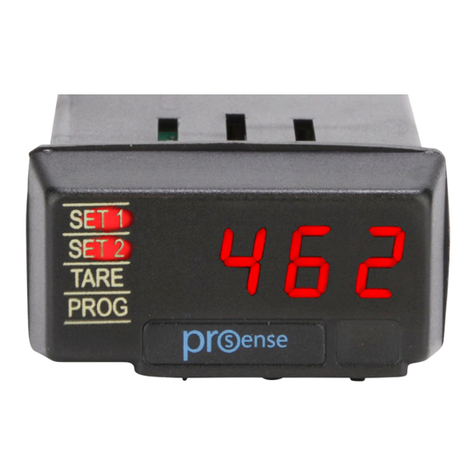
AutomationDirect
AutomationDirect ProSense DPM1-P Series user manual
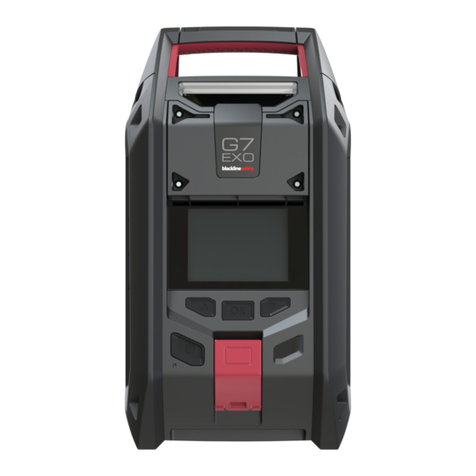
Blackline Safety
Blackline Safety G7 EXO Technical user's manual
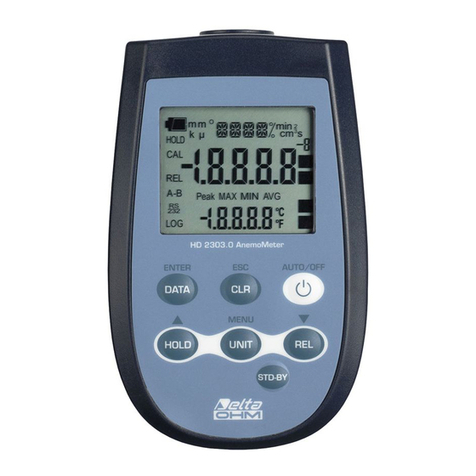
Delta OHM
Delta OHM HD2302.0 manual

Lake Shore
Lake Shore 460 user manual
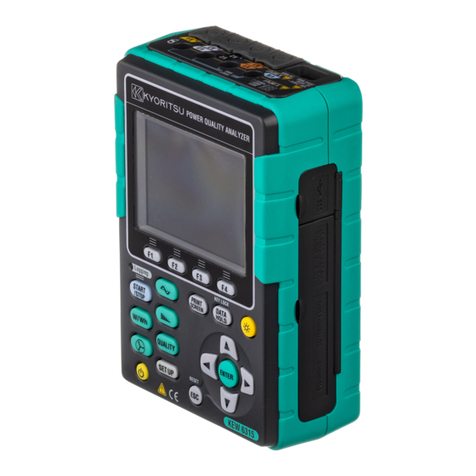
Kyoritsu Electrical Instruments Works, Ltd.
Kyoritsu Electrical Instruments Works, Ltd. KEW6315-03 instruction manual
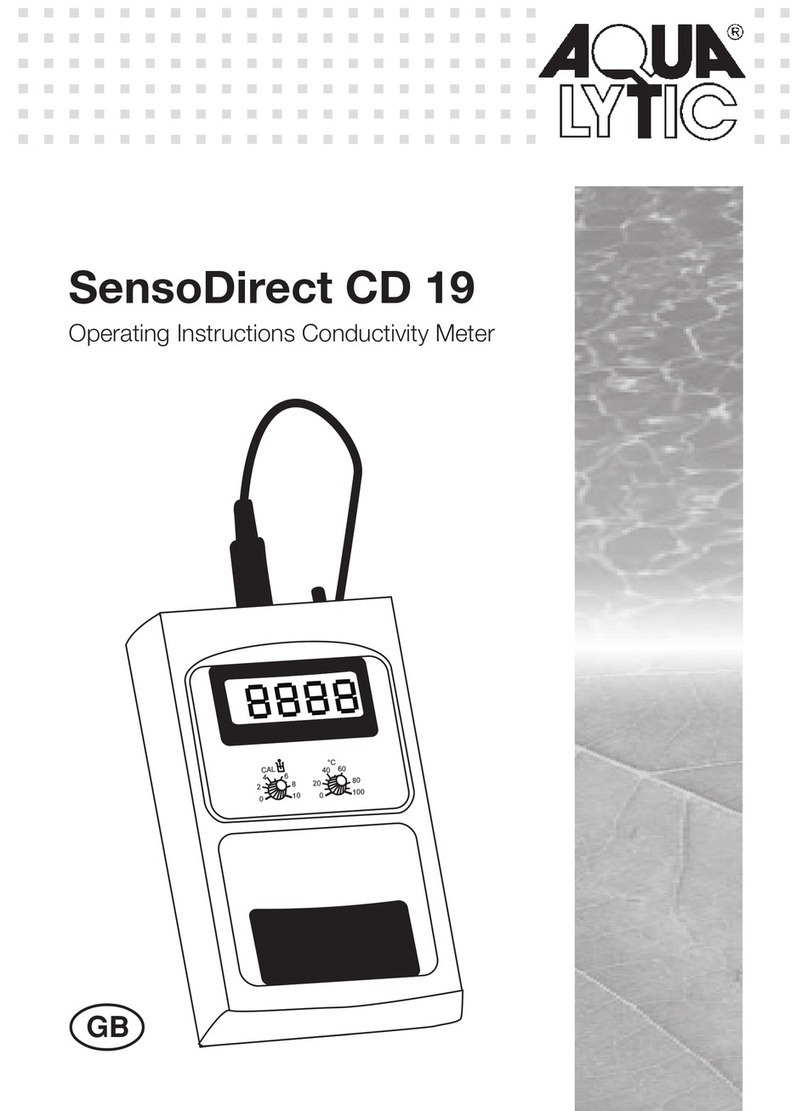
Aqualytic
Aqualytic SensoDirect CD 19 operating instructions
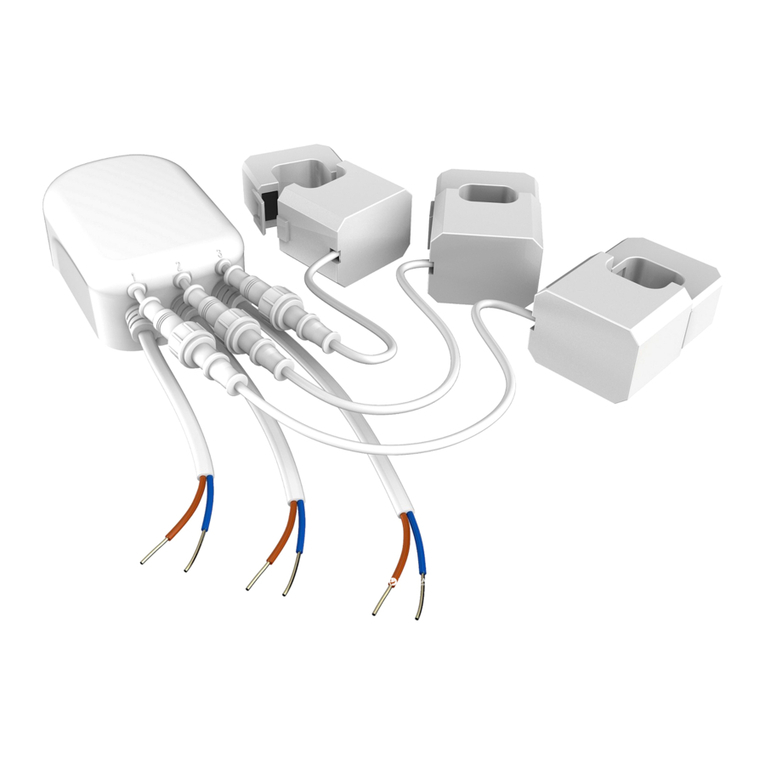
Alarmcom
Alarmcom Aeon Labs HEM installation guide
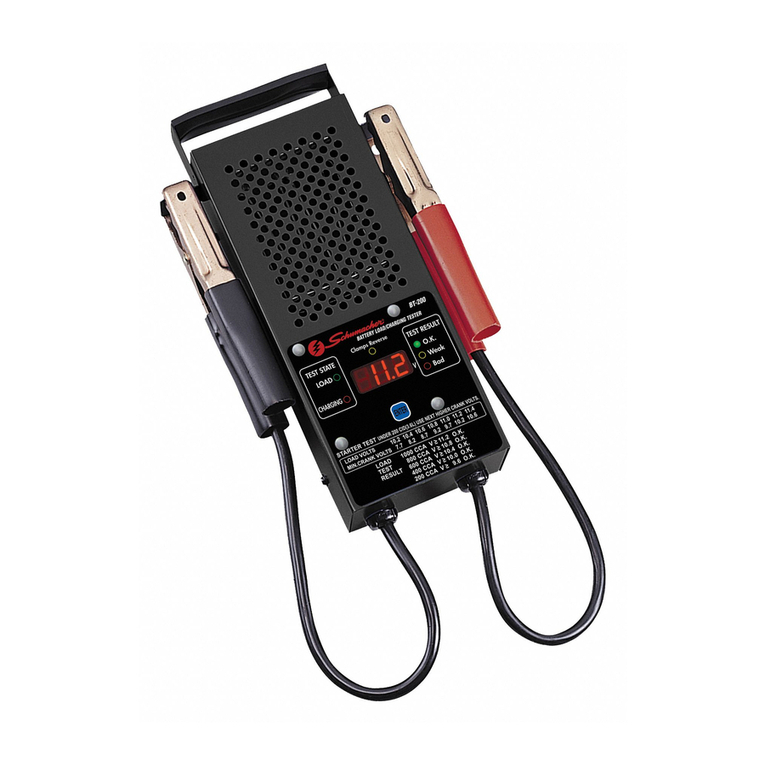
Proseries
Proseries PST-200 owner's manual
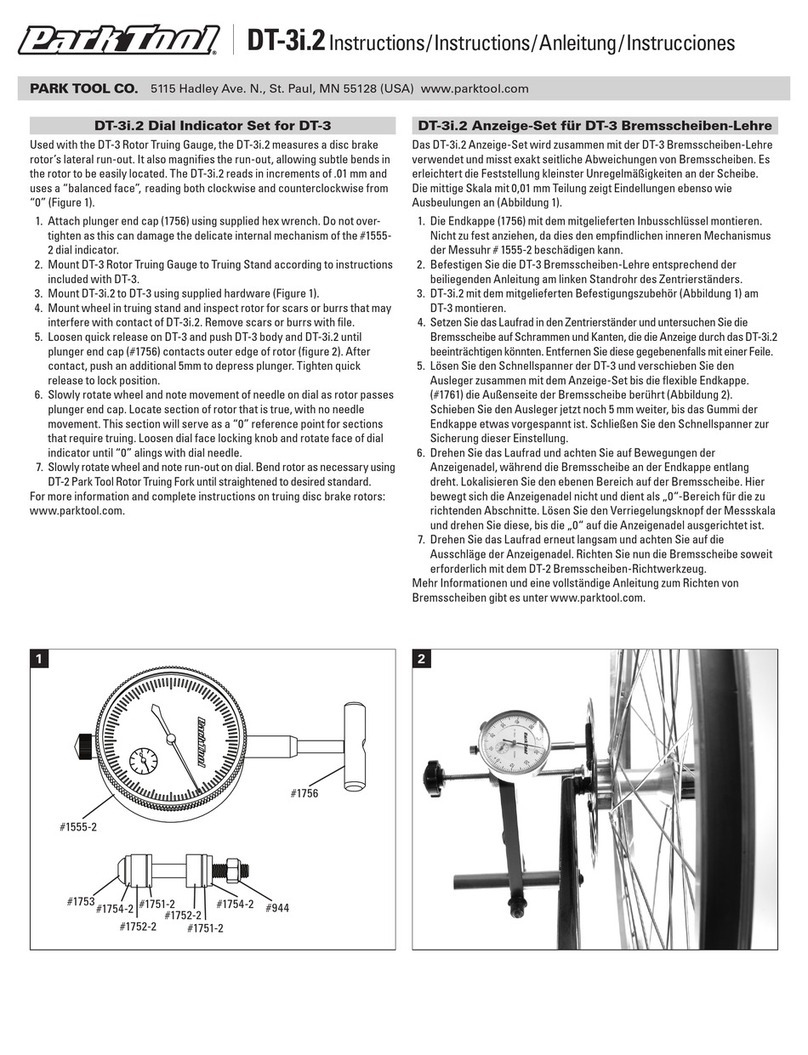
parktool
parktool DT-3i.2 instructions
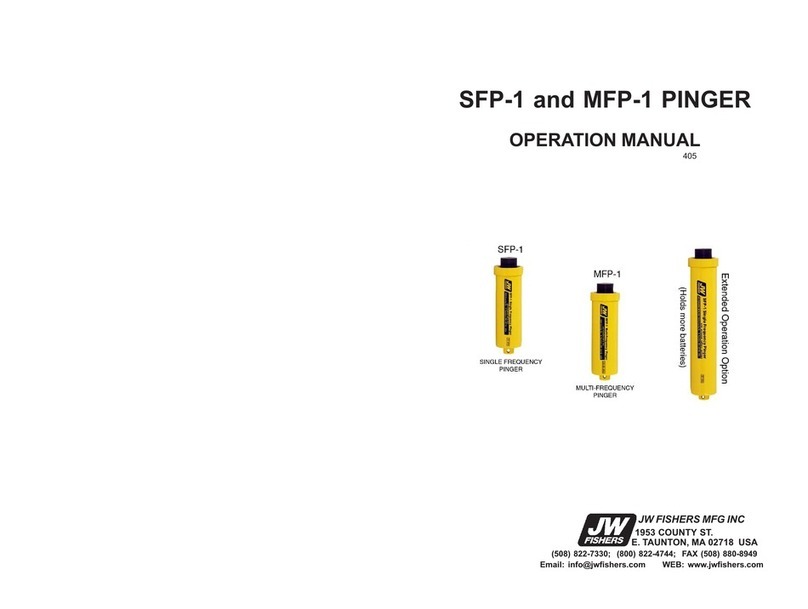
JW Fishers
JW Fishers SFP-1 Operation manual
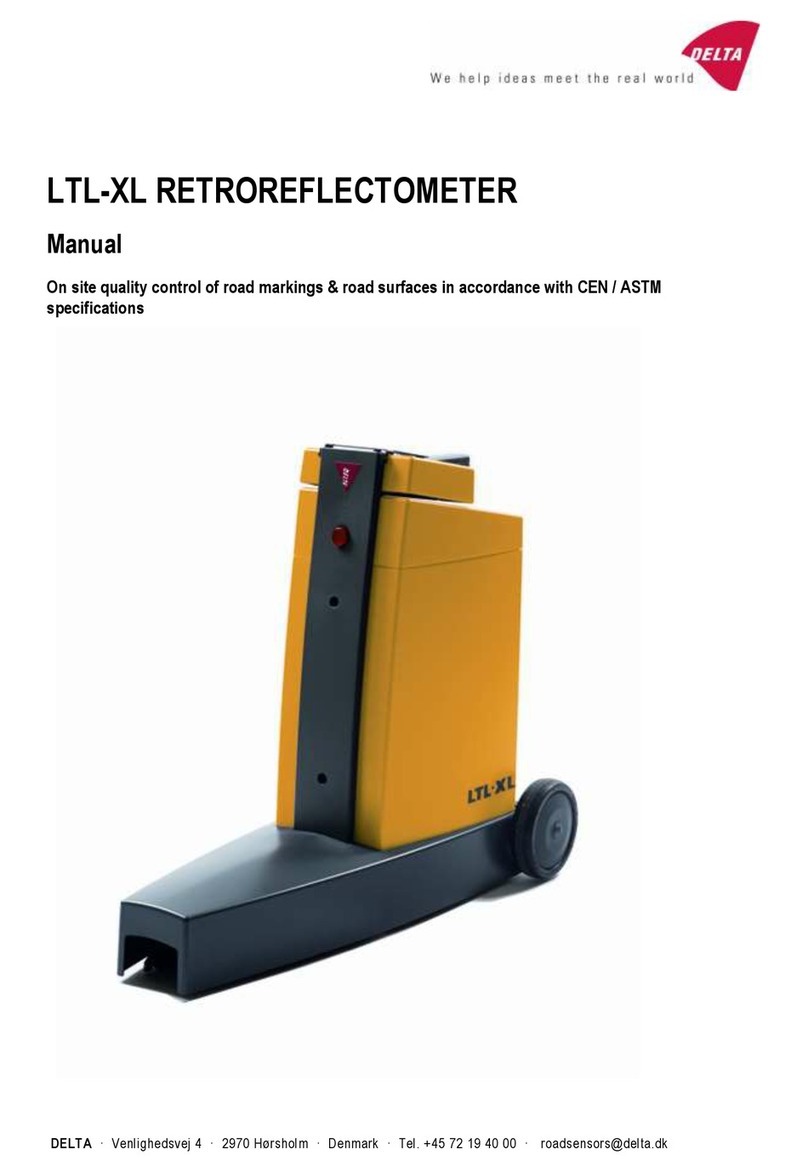
Delta
Delta LTL-XL manual
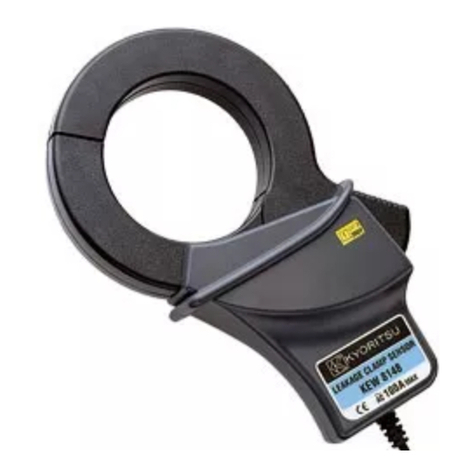
Kyoritsu Electrical Instruments Works, Ltd.
Kyoritsu Electrical Instruments Works, Ltd. KEW8146 instruction manual
